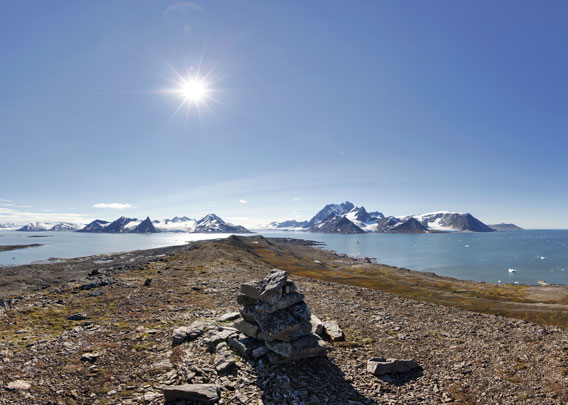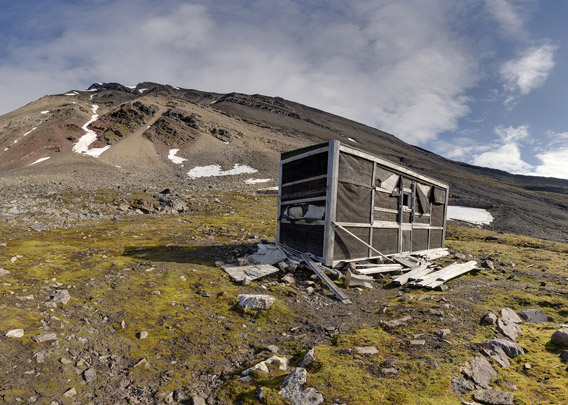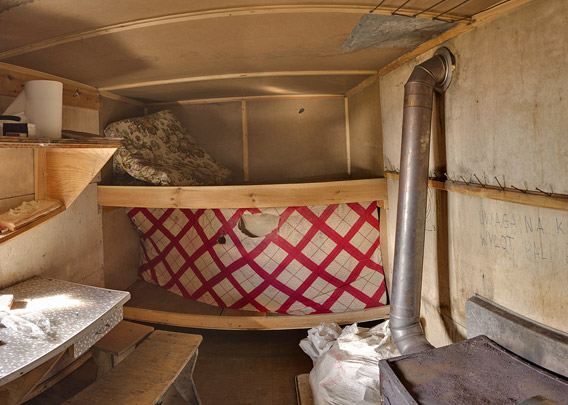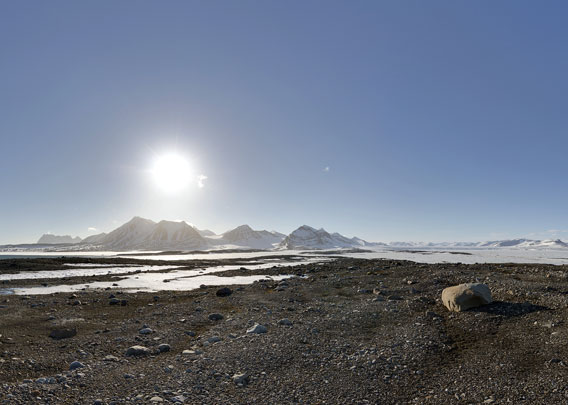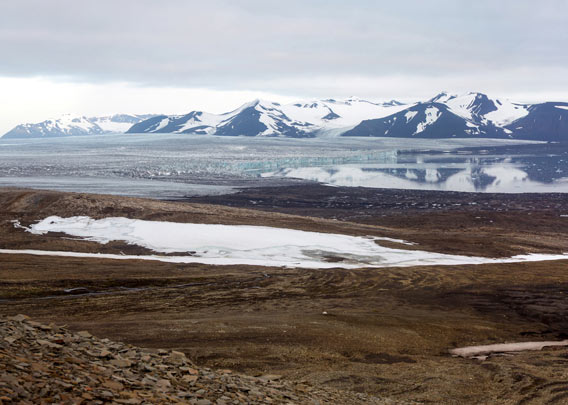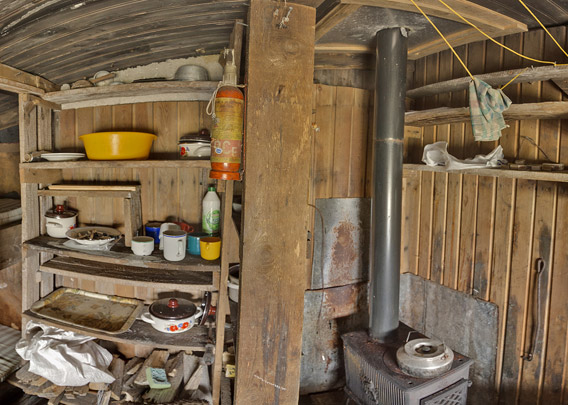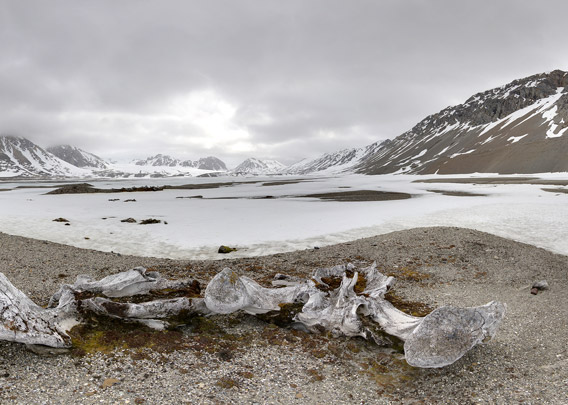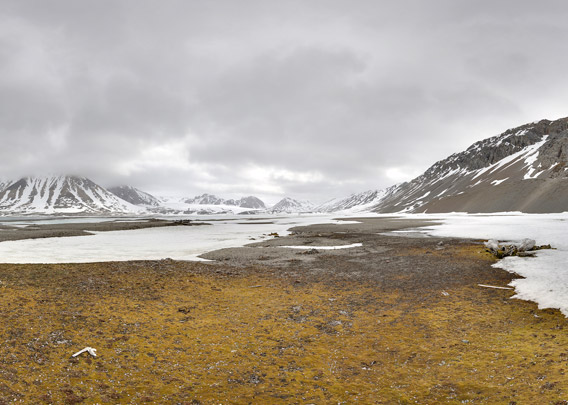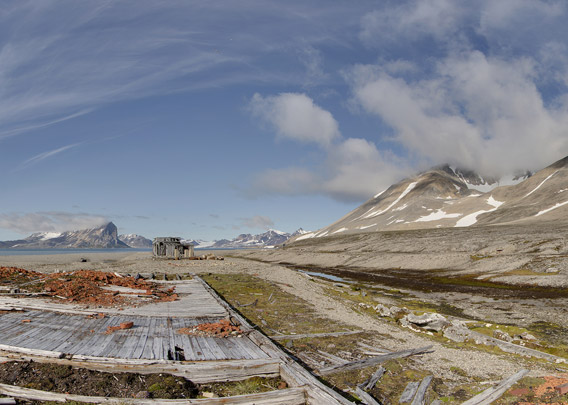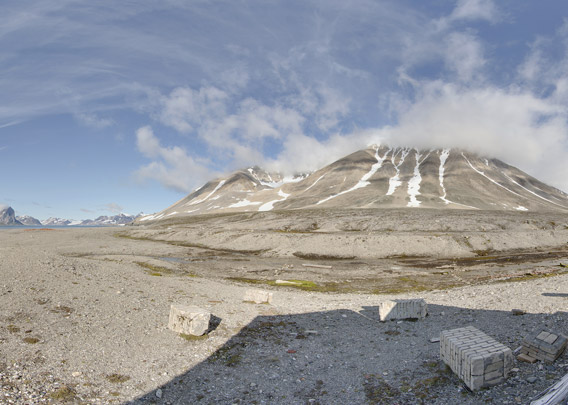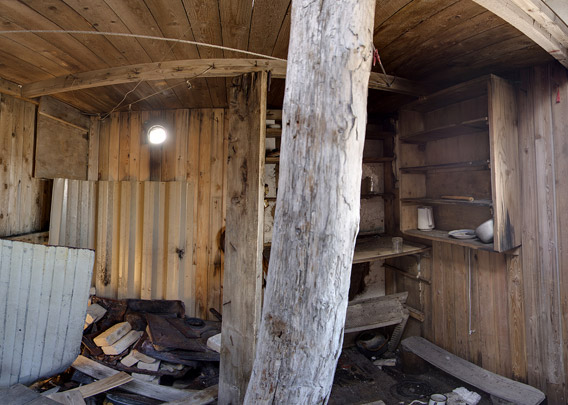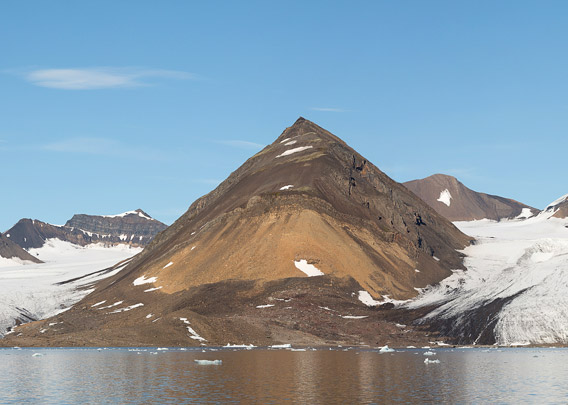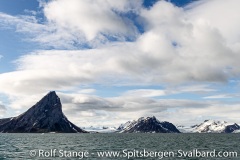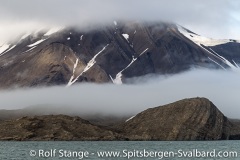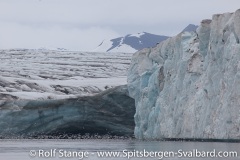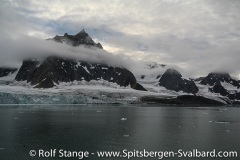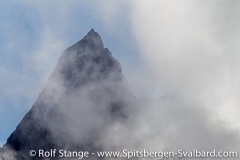-
current
recommendations- Liefdefjord
New page dedicated to one of Spitsbergen's most beautiful fjords. Background information and many photos.
- New Spitsbergen guidebook
The new edition of my Spitsbergen guidebook is out and available now!
- Liefdefjord
New page dedicated to one of Spitsbergen's most beautiful fjords. Background information and many photos.
Page Structure
-
Spitsbergen-News
- Select Month
- April 2025
- March 2025
- February 2025
- January 2025
- December 2024
- November 2024
- October 2024
- September 2024
- August 2024
- July 2024
- June 2024
- May 2024
- April 2024
- March 2024
- February 2024
- January 2024
- December 2023
- November 2023
- October 2023
- September 2023
- August 2023
- July 2023
- June 2023
- May 2023
- April 2023
- March 2023
- February 2023
- January 2023
- December 2022
- November 2022
- October 2022
- September 2022
- August 2022
- July 2022
- June 2022
- May 2022
- April 2022
- March 2022
- February 2022
- January 2022
- December 2021
- November 2021
- October 2021
- September 2021
- August 2021
- July 2021
- June 2021
- May 2021
- April 2021
- March 2021
- February 2021
- January 2021
- December 2020
- November 2020
- October 2020
- September 2020
- August 2020
- July 2020
- June 2020
- May 2020
- April 2020
- March 2020
- February 2020
- January 2020
- December 2019
- November 2019
- October 2019
- September 2019
- August 2019
- July 2019
- June 2019
- May 2019
- April 2019
- March 2019
- February 2019
- January 2019
- December 2018
- November 2018
- October 2018
- September 2018
- August 2018
- July 2018
- June 2018
- May 2018
- April 2018
- March 2018
- February 2018
- January 2018
- December 2017
- November 2017
- October 2017
- September 2017
- August 2017
- July 2017
- June 2017
- May 2017
- April 2017
- March 2017
- February 2017
- January 2017
- December 2016
- November 2016
- October 2016
- September 2016
- August 2016
- July 2016
- June 2016
- May 2016
- April 2016
- March 2016
- February 2016
- January 2016
- December 2015
- November 2015
- October 2015
- September 2015
- August 2015
- July 2015
- June 2015
- May 2015
- April 2015
- March 2015
- February 2015
- January 2015
- December 2014
- November 2014
- October 2014
- September 2014
- August 2014
- July 2014
- June 2014
- May 2014
- April 2014
- March 2014
- February 2014
- January 2014
- December 2013
- November 2013
- October 2013
- September 2013
- August 2013
- July 2013
- June 2013
- May 2013
- April 2013
- March 2013
- February 2013
- January 2013
- December 2012
- November 2012
- October 2012
- September 2012
- August 2012
- July 2012
- June 2012
- May 2012
- April 2012
- March 2012
- February 2012
- January 2012
- December 2011
- November 2011
- October 2011
- September 2011
- August 2011
- May 2011
- April 2011
- March 2011
- February 2011
- January 2011
- December 2010
- November 2010
- September 2010
- August 2010
- July 2010
- June 2010
- May 2010
- April 2010
- March 2010
- February 2010
- November 2009
- October 2009
- August 2009
- July 2009
- June 2009
- May 2009
- April 2009
- March 2009
- February 2009
- January 2009
- December 2008
- November 2008
- October 2008
- August 2008
- July 2008
- June 2008
- May 2008
- April 2008
- March 2008
- February 2008
- April 2000
- Select Month
-
weather information
-
Newsletter

| Guidebook: Spitsbergen-Svalbard |
Panoramas: Hornsund
Hornsund: Treskelen
Panoramic view from the ridge of the Treskelen peninsula over almost the whole of of Hornsund. From here, you watch over Brepollen, the innermost bay of Hornsund, with its surrounding glaciers. You see the famous mountains Bautaen (“the monolith”, towering needle-sharp and 475 m high over the entrance to Brepollen) and Hornsundtind, a 1429 m high carbonate massive standing directly on the south shore of Hornsund. Hornsundtind is the highest mountain in southern Spitsbergen.
The bay Brepollen is now wide-open, but it was completely filled by the surrounding glaciers Storbreen, Hornbreen and Chomjakovbreen as recent as the early 20th century. The bay Brepollen simply didn’t exist before.
- pano anchor link: #Treskelen_13Juli13_091
In Adriabukta, next to the peninsula Treskelen, there is another old trapper’s cabin. This was the one deepest in the fjord in the days of polar bear hunting. The hut is rather small and starting to show signs of deterioration.
- pano anchor link: #Treskelen_13Juli13_014
- pano anchor link: #Treskelen_13Juli13_035
Hornsund: Ammonitøya
Ammonitøya is a small island in Brepollen (innermost Hornsund). The name points towards fossils (ammonites) discovered here. The ammonites are found in moraine sediments covering most of the island, which was glacier-covered until the glaciers receded in the early 20th century. The rocks containing the fossils were brought by glaciers from anywhere in the catchment area of the glaciers, which includes large areas around Brepollen with sedimentary bedrock dating to the Jurassic and Cretaceous (and Tertiary, but this does not contain ammonites in Spitsbergen).
Wherever the ammonites exactly came from, they certainly enjoy brilliant views over Brepollen these days and more or less regular visits from polar bears.
- pano anchor link: #Ammonitoya_08Juni13_001
Hornsund: Brepollen
View to the east and south from Cholmaksla, a moraine-covered ridge that stretches from the mountain Mezenryggen into Brepollen (innermost Hornsund). Left and centre: Hornbreen (-glacier), in the right side background: Mendeleevbreen.
- pano anchor link: #spitsbergen_003
Hornsund: Gnålodden
Gnålodden is located centrally in Hornsund under the mountain Gnålberget. You have to keep an eye on many underwater rocks as you are approaching by boat, they have killed many zodiac outboard engine propellers.
Gnålodden is a place with a lot to see within a small area. Just the rocky shoreline is a sight in itself. The flat area is of limited size, but beautifully green with its mossy tundra, a clear indication for the presence of large numbers of Brunich’s guillemots and kittywakes that breed in the steep cliffs of Gnålberget.
The old hut is a real eyecatcher. Until the protection of polar bears in 1973, it was part of a classical polar bear hunting area. The bears came with drift ice around the south cape, up the west coast and into Hornsund. In some years, hundreds of them migrated through the fjord and back to the east coast: rich hunting grounds for trappers, including the legendary Norwegian female hunter Wanny Woldstad, who was one of the first active lady hunters in Spitsbergen when she wintered several times in Hornsund during the 1930s.
- pano anchor link: #Gnaalodden_21Juli13_035
The panorama shows the main room of the hut, which is still regularly used by scientists from the near-by Polish research station and accoasionally by locals from Longyearbyen who take the long trip with snow mobiles.
Panorama: Hornsund – Gåshamna (West)
When you enter Hornsund, then you will soon have Gåshamna on your stardboard side, as it is on the southern side of the fjord. If “Goose bay”, as it translates, refers to geese that may have been present when the place got its name, a ship, the Dutch town Goes or an Austrian count Goess from the 19th century – the first time the name appeared was on an Austrian map, drawn by Sterneck and published in 1874 – is not known anymore. But what is well known is that Gåshamna provides reasonably good anchorage just under the coast and often enough protection from the strong east-westerly winds that are so frequent in Hornsund to allow landings in conditions that make other places just impossible.
Already the whalers knew that and established their stations in the early 17th century on both sides of the bay. They hunted „Right whales“, which we know as Bowhead whales today, and left their impressive bones in large numbers bleaching for centuries under midnight sun and polar night. Exactly as you can see them today if you get there.
This panorama shows the western side of the bay Gåshamna.
- pano anchor link: #Gaashamna_09Juni13_33
- pano anchor link: #Gaashamna_09Juni13_52
Panorama: Hornsund – Gåshamna (East)
The whalers also left their traces on the east side of Gåshamna in shape of piles of mighty whalebones. These are lying a bit forgotten behind a small hill, which draws the attention at least initially because it is quite obvously a site of major activities in historical times. It is the wintering site of the Russian section of the Russian-Swedish Arc-de-meridian expedition: not very famous to the public, but certainly a major and very successful undertaking to establish the precise shape of the Earth: a perfect ball or slightly flattened on the poles? To find that out, you need to precisely measure along a meridian both on low and in high latitudes. Spitsbergen was the obvious place to get that done. Swedish and Russian scientists joint their efforts fort his huge task. Both wintered in 1899-1900. Gåshamna is the Russian site.
- pano anchor link: #Gaashamna_13Juli13_115
- pano anchor link: #Gaashamna_13Juli13_134
- pano anchor link: #Gaashamna_13Juli13_094
Burgerbukta
Burgerbukta is on the northern side of Hornsund, and it displays this beautiful panorama on its eastern shore. The beauty of this landscape in terms of colours and structures is deeply rooted in its geology. The colouration is due to the layers: from brownish-red Old Red at the bottom (Devonian/lower Carboniferous) through yellowish-brown upper Carboniferous/Permian to dark-brown Triassic at the top. And the deformation related to the opening of the north Atlantic is responsible for the beautiful folds and bends.
- pano anchor link: #Austre-Burgerbukta_14Juli13_065
No 360° panorama, only works with the Flash Player on mobile devices, for example, with the → Puffin-Browser.
Photo Galleries: Hornsund
Click on the yellow areas or the links below the map to view photo galleries from the individual areas.
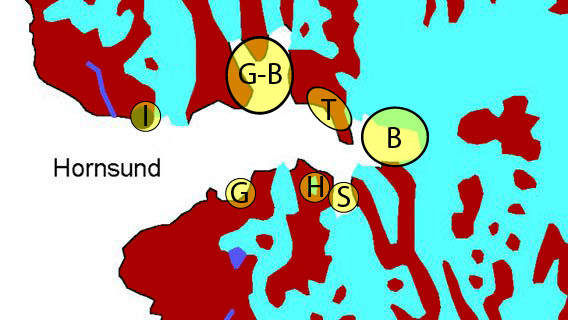
- I = Isbjørnhamna (Polish research station), Hansbreen
- G-B = Gnålodden, Burgerbukta
- T = Treskelen
- B = Brepollen
- S = Samarinvågen
- H = Hornsundtind
- G = Gåshamna
Album Hornsund
- album anchor link: #e-hornsund
Click on thumbnail to get the corresponding gallery.
BOOKS, CALENDAR, POSTCARDS AND MORE
This and other publishing products of the Spitsbergen publishing house in the Spitsbergen-Shop.
last modification: 2017-12-18 ·
copyright: Rolf Stange
